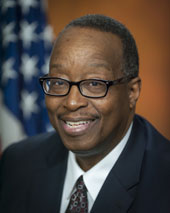 One of the most important and unsettling observations I made during my 22-year career as a trial lawyer for youth was that young people who enter the juvenile justice system, especially those charged with serious offenses, are likely to have been exposed to violence, often many times, as children. Every path to delinquency takes a different course, but the experience of childhood trauma is as close to a common marker as you will find.
One of the most important and unsettling observations I made during my 22-year career as a trial lawyer for youth was that young people who enter the juvenile justice system, especially those charged with serious offenses, are likely to have been exposed to violence, often many times, as children. Every path to delinquency takes a different course, but the experience of childhood trauma is as close to a common marker as you will find.
Two years ago, while serving as co-chair of the Attorney General’s National Task Force on Children Exposed to Violence, I heard from others across the country about the high rates of violence encountered by children and how this early exposure is the foundation not just of later delinquent and criminal behavior but of a host of other problems, from poor academic performance to long-term illness. With two out of every three American children touched by violence and trauma in some way, my colleagues on the task force and I agreed that this could rightly be called a national crisis.
We heard that this crisis is even more acute – if we could believe that was even possible – in communities where American Indian and Alaska Native children live. Rates of crime and violence in some tribal areas are alarmingly high, often exceeding and sometimes dwarfing those of other jurisdictions, leading to the reasonable conclusion that native children are at especially high risk. As one tribal leader put it, for those in Indian country “the question is not who has been exposed to violence, it’s who hasn’t been exposed to violence.” The testimony of tribal officials and native people was so compelling, and the available research on native children and violence so paltry, that we recommended creating a separate task force to study the issue.
Recently, Attorney General Eric Holder acted on that recommendation and established the American Indian and Alaska Native Children Exposed to Violence Task Force, which is anchored by two separate bodies: a working group assembled to identify actions that federal agencies can take and a 13-member national advisory committee whose job is to improve our understanding of children’s exposure to violence in Indian country and recommend ways to address it. The federal working group has been meeting since last summer and already has taken several important steps, including expanding educational services inside Bureau of Indian Affairs juvenile detention facilities.
The advisory committee, chaired by former United States Sen. Byron Dorgan and Iroquois composer and performer Joanne Shenandoah, recently held its first hearing in Bismarck, N.D., where tribal leaders, child and family advocates, Native Americans who have experienced childhood trauma, and others came together to talk about child sexual abuse, violence in the home, and the intersection between child maltreatment and domestic abuse.
Their testimony underscored what researchers have told us – that the shared historic experience by American Indian and Alaska Native people of displacement, forced assimilation and cultural suppression leaves a legacy of trauma that elevates the risk of child maltreatment.
Over the coming year, committee members will hold three more hearings and several listening sessions and will consult other experts on the topic. By the end of 2014, they will put together a report for the Attorney General suggesting ways that policymakers, practitioners, and researchers across the nation can address this troubling phenomenon. The attorney general’s hope is that their recommendations will be bold and visionary and give the country a clear roadmap to countering violence among native children.
Violence in many tribal communities is complex and deep-rooted. We can’t expect it to go away on its own. But we can fight back by improving our understanding of it and supporting effective practices, many of which spring from tribal traditions, that help avert violence and enhance resilience among affected children.
Our work will not be easy, but a strong collective commitment to the safety and well-being of native children will guide us to success.
Bob Listenbee is the Administrator of the Office of Juvenile Justice and Delinquency Prevention, a component of the Office of Justice Programs within the United States Department of Justice.